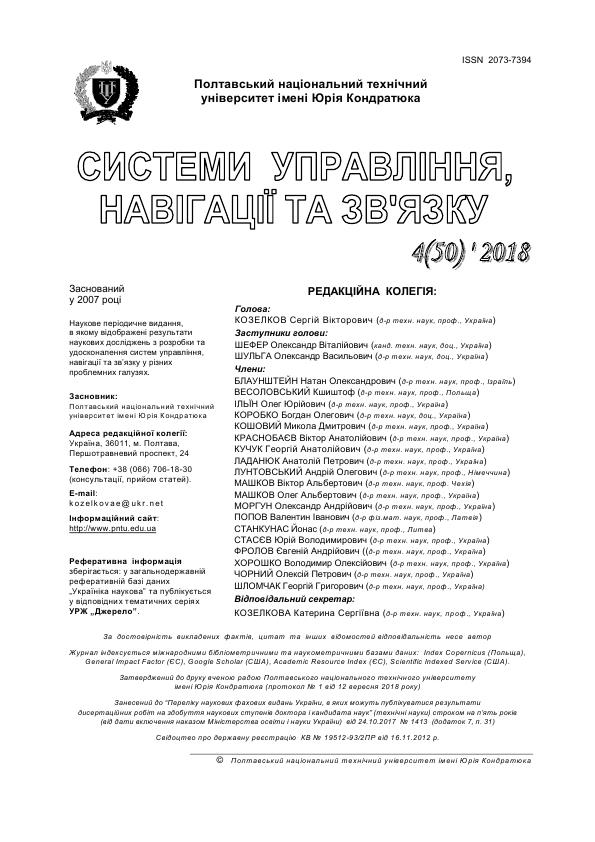RESULTS OF RESEARCH OF GENERATORS OF PSEUDO-RANDOM SEQUENCES WITH DYNAMIC PARAMETERS
DOI:
https://doi.org/10.26906/SUNZ.2018.4.139Keywords:
generator, shift register, congruent generator, cryptostability, output sequence, cryptanalysisAbstract
This work consists of a description and the results of the study of two types of PRS generators - congruent and generator based on shift registers. The main features of the presented generators are the use of dynamically changing parameters. These can be parameters a and c for a congruent generator and generating polynomials for a generator based on shift registers. In addition to using dynamic parameters to increase the cryptostability of the output sequence, a modification of the algorithm for generating of PRS has been developed, consisting in using the XOR operation between the generated sequences of a certain length obtained from two registers having different bits. To test the properties of a congruent generator, a comparative analysis has been performed between 10 generated sequences using the generator's static parameters (a, c, m) and 10 generated sequences using dynamic parameters (a, c, m). For the static generator, five groups of parameters a, c and parameter m with value 220-1 for each group have been used. For the dynamic generator, identical groups of parameters a and c have been used, which were randomly selected and insert into the generator for each new iteration. It should be noted that the results of the appearance of pairs of symbols are slightly different, with less than one percent. Appearances of three and four groups of characters have a significant difference when using generators with fixed parameters, while for generators with dynamic parameters the discrepancies were smaller. As a result of the conducted researches conclusions are drawn that the use of dynamically changing parameters allows to obtain more random sequences capable of resisting the known methods of cryptanalysis. In the study of generators based on shift registers, a series of experiments have been developed whose ultimate goal was to analyze the effect of the initial states of the register on the statistical properties of the resulting sequence, analysis of the influence of the polynomial that was used on the statistical properties of the generator and analysis of the average deviation of symbols in the resulting sequence. Based on the results of the experiments, conclusions are drawn that using the new generator configuration significantly increases period of PRS, making it impossible to restore the generator structure. When comparing the statistical characteristics of the obtained PRS on the congruent generators and the generators on shift registers it has been found that the second type of generator has slightly better characteristics of the generated PRS. It should be stressed that both types of generators satisfy NIST requirements, exceeding them by more than two orders of magnitude. Both types of generators using dynamically changing parameters have considerable resistance to known crypto attacks, which allows their use in modern cryptosystems.Downloads
References
Певнев В.Я. Эффективность информационной безопасности замкнутых систем / В. Я. Певнев // Радіоелектронні і комп'ютерні системи. - 2009. - № 5. - С. 82–85.
Певнев В.Я. Математическая модель информационной безопасности / В. Я. Певнев, М. В. Цуранов// Системи обробки інформації. – 2010.-№3. - С. 62-64.
Певнев В.Я. Методы обеспечения целостности информации в инфокоммуникационных системах / В.Я. Певнев // Вісник Національного технічного університету ХПІ. Серія: Техніка та електрофізика високих напруг. – 2015. - № 51. – С. 74-77
Federal Information Processing Standards Publication 197 November 26, 2001 Specification for the ADVANCED ENCRYPTION STANDARD (AES)
ДСТУ 7624:2014. Інформаційні технології. Криптографічний захист інформації. Алгоритм симетричного блокового перетворення. [Текст]. – Введ. 01–07–2015. – К.: Мінекономрозвитку України, 2015.
ГОСТ Р 34.12-2015Информационная технология. Криптографическая защита информации. Блочные шифры.- Введ. 01-01-2016.- М.: Стандартинфо, 2016
Li, Pu; Wang, Yun-Cai; Zhang, Jian-Zhong (2010-09-13). "All-optical fast random number generator". Optics Express. 18 (19): 20360–20369. doi:10.1364/OE.18.020360. ISSN 1094-4087.
Подорожный И. В. Обзор аппаратных генераторов случайных чисел // Молодой ученый. — 2016. — №1. — С. 190-194. — URL https://moluch.ru/archive/105/24688/ (дата обращения: 28.05.2018).
Фролов, А.В. Анализ модификации конгруэнтного генератора псевдослучайных чисел / А.В. Фролов, В.Я. Певнев // Материалы І МНТК Проблемы научно-технического и правового обеспечения кибербезопасности в современном мире. – Х., 2016 – С. 33.
Фролов, В.В. Исследование генератора псевдослучайных чисел на регистрах сдвига с обратной связью / В.В. Фролов, В.Я. Певнев //Материалы І МНКТ Проблемы научно-технического и правового обеспечения кибербезопасностив современном мире. - Х., 2016 – С. 32-33.
Soto, J. Statistical Testing of Random Number Generators/ J. Soto – National Institute of Standards & Technology, 2009. – pp. 3.
Шнайер, Б. Прикладная криптография. Протоколы, алгоритмы, исходные тексты на языке Си. / Б. Шнайер — Второе издание Триумф, 2013. — 816 с.




